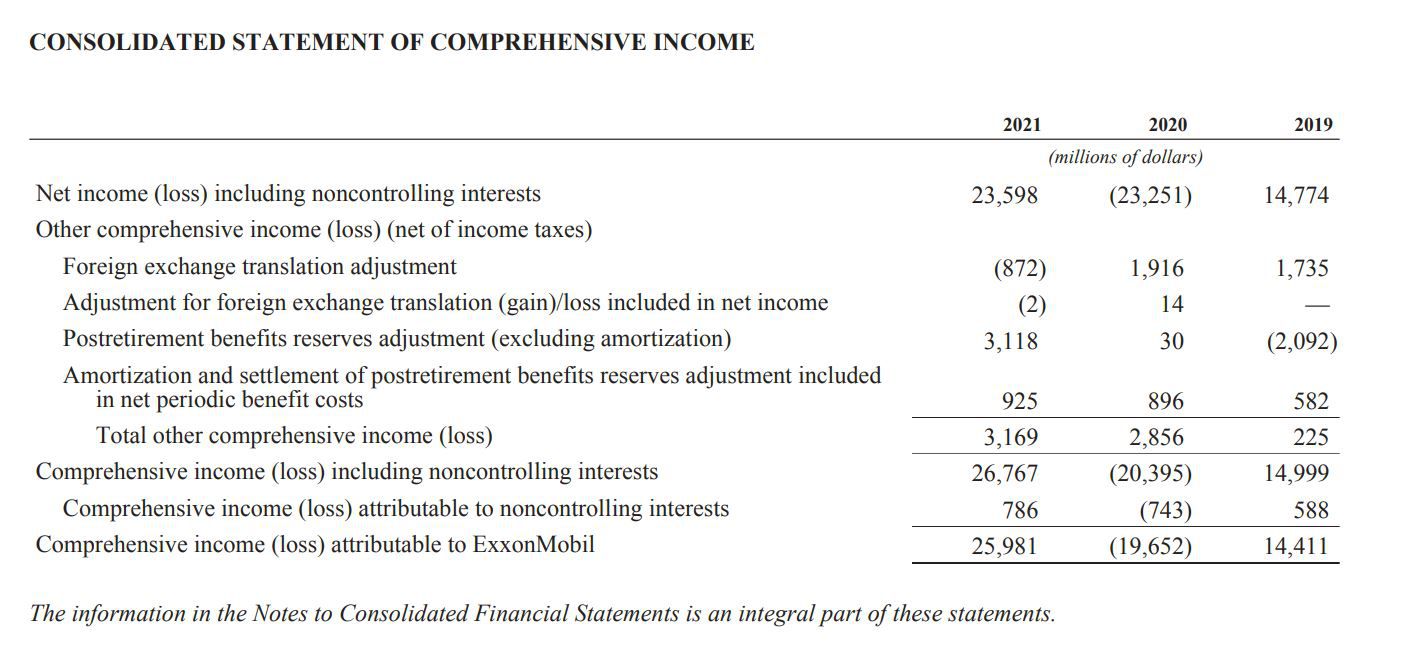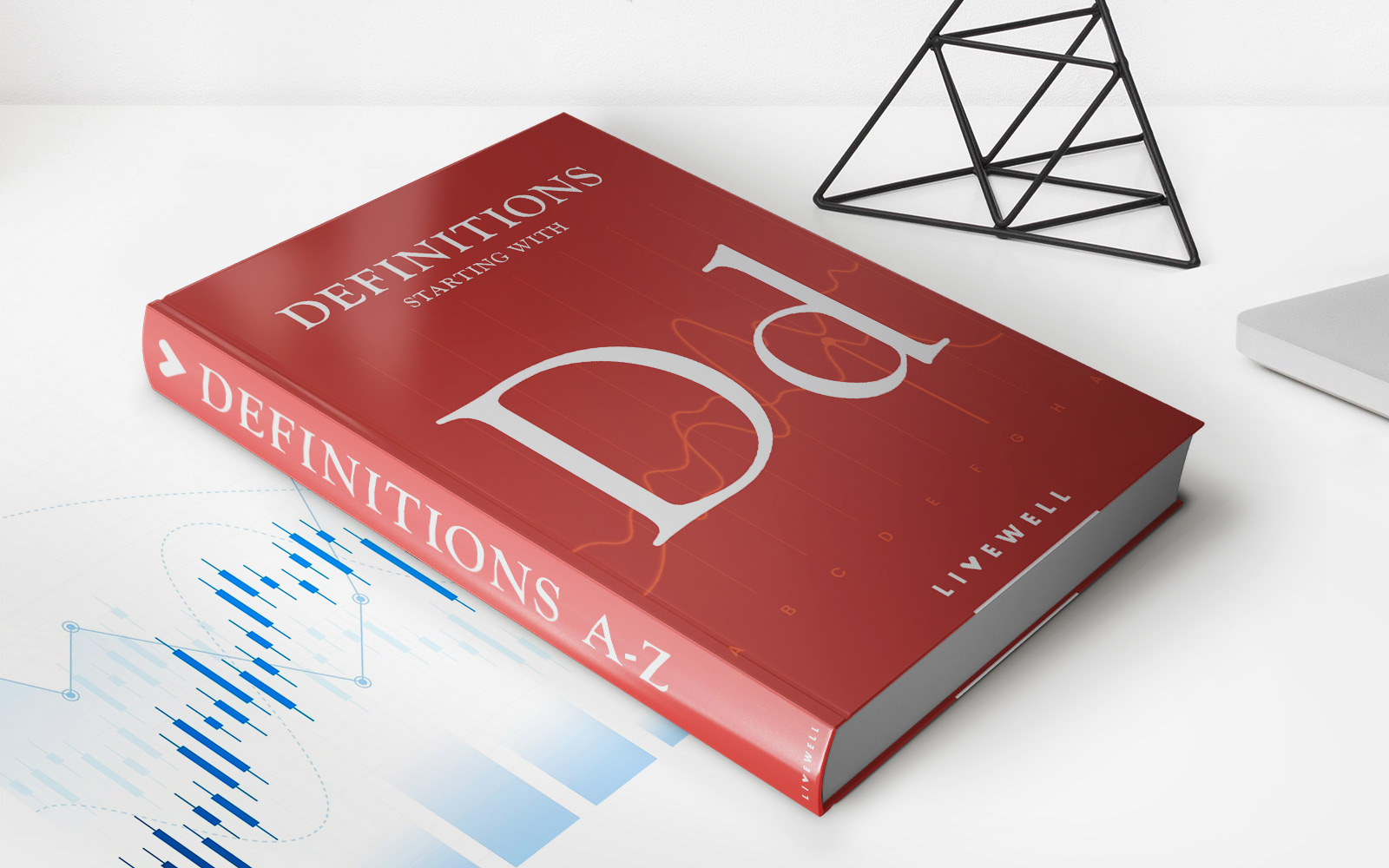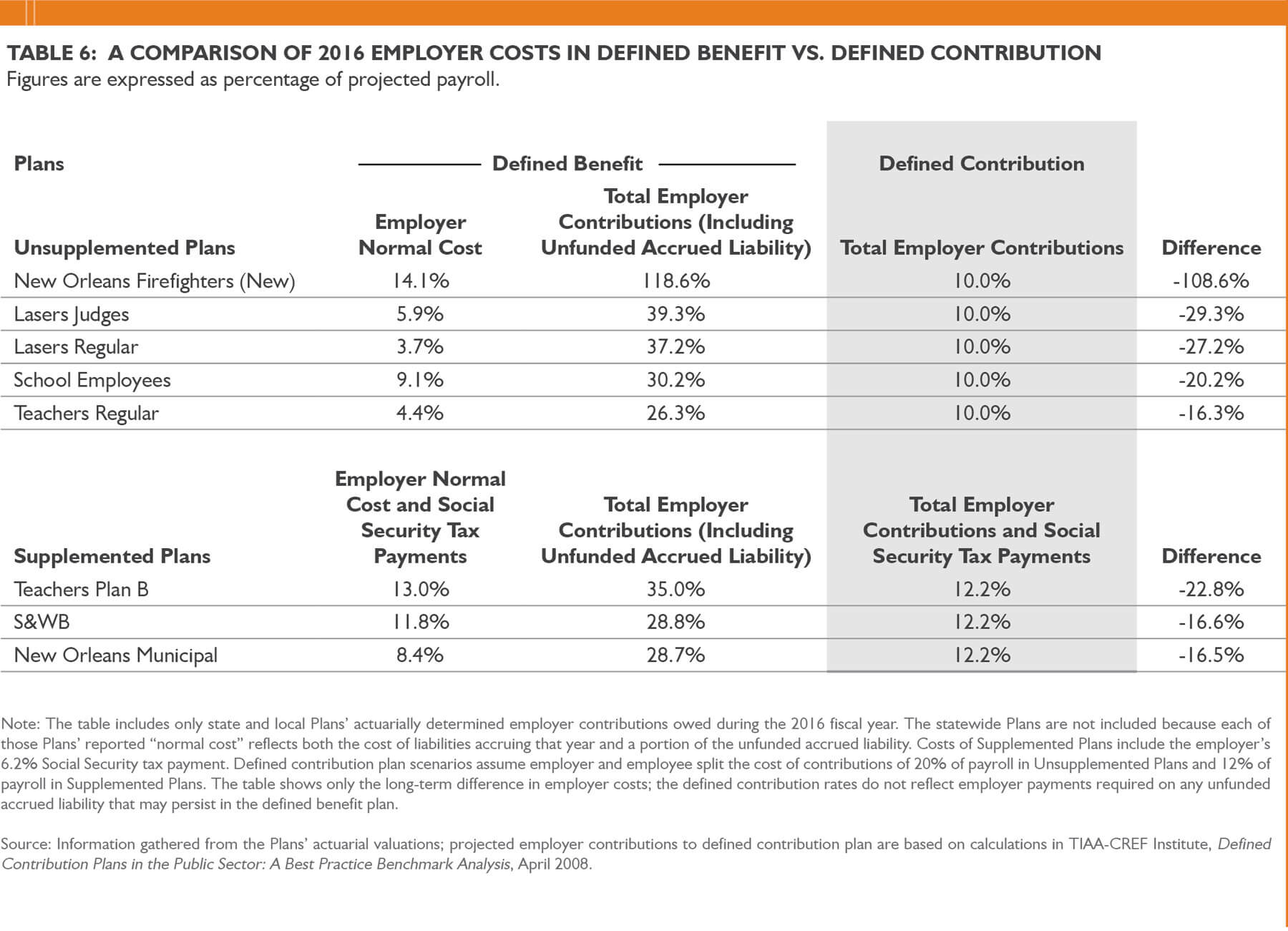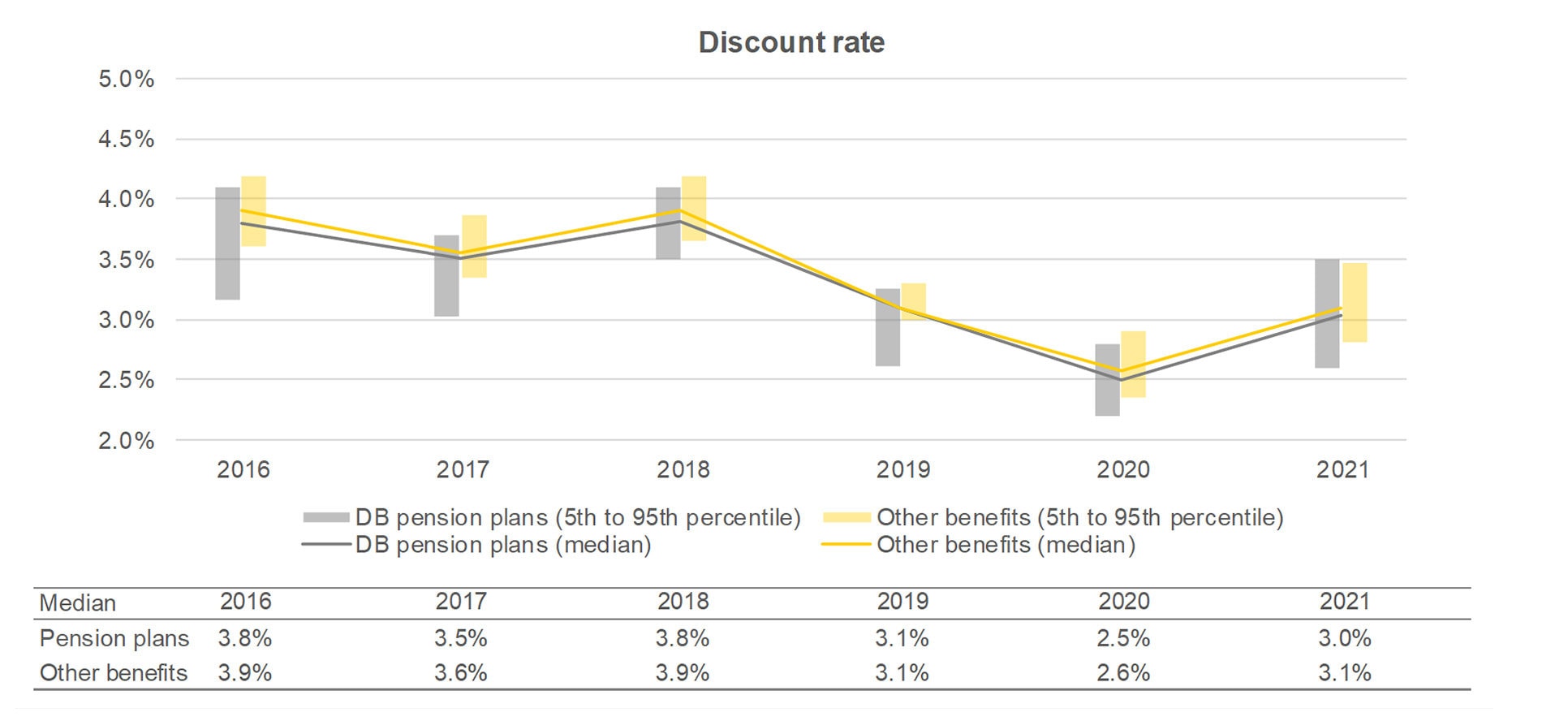Home>Finance>Where To Find Data On Defined Benefit Plans In The US


Finance
Where To Find Data On Defined Benefit Plans In The US
Published: December 21, 2023
Looking for data on defined benefit plans in the US? Explore our comprehensive finance resources for insights on managing your finances and understanding retirement plans.
(Many of the links in this article redirect to a specific reviewed product. Your purchase of these products through affiliate links helps to generate commission for LiveWell, at no extra cost. Learn more)
Table of Contents
- Introduction
- Available Government Sources
- Pension Benefit Guaranty Corporation (PBGC)
- Internal Revenue Service (IRS)
- Bureau of Labor Statistics (BLS)
- Other Government Sources
- Private Research Organizations
- Employee Benefit Research Institute (EBRI)
- National Institute on Retirement Security (NIRS)
- Center for Retirement Research at Boston College
- Other Private Research Organizations
- Academic Institutions
- Federal Reserve Board
- Conclusion
Introduction
Defined Benefit (DB) plans are retirement plans in which the employer guarantees a specific benefit amount to the employee upon retirement. These plans have traditionally been a significant part of the retirement landscape in the United States, providing retirees with a reliable income stream during their later years. However, as the retirement landscape evolves, it becomes increasingly important for individuals and policymakers to have access to accurate and up-to-date data on DB plans.
In this article, we will explore the various sources where individuals can find data on DB plans in the US. Whether you are an employee wanting to understand the specifics of your employer’s DB plan or a researcher looking to analyze trends in retirement benefits, having access to reliable data is crucial.
Fortunately, there are several government sources, private research organizations, and academic institutions that collect and provide information on DB plans. These sources offer a wide range of data, from basic statistics to more detailed analyses.
By exploring these sources, individuals and organizations can gain a better understanding of how DB plans are structured, funded, and managed. This knowledge can help employees make informed decisions about their retirement savings and assist policymakers in designing effective retirement policies.
Now, let’s dive into the available government sources, private research organizations, and academic institutions that provide data on DB plans in the US.
Available Government Sources
The US government provides several reliable sources of data on defined benefit (DB) plans. These sources offer valuable information that can help individuals, researchers, and policymakers gain insights into the state of DB plans in the country.
Pension Benefit Guaranty Corporation (PBGC): The PBGC is a government agency that oversees and insures private sector DB plans. They provide a wealth of information on DB plans through their website. Users can access statistics on plan coverage, funding levels, and benefits paid. The PBGC also offers searchable databases, such as the Pension Search Directory, which allows individuals to search for unclaimed pension benefits.
Internal Revenue Service (IRS): The IRS plays a crucial role in regulating DB plans. They provide access to various forms and documents related to DB plans, including the Form 5500 series. These forms contain detailed information on plan assets, contributions, and participant demographics. Researchers can utilize the IRS’s Form 5500 Search Tool to explore and analyze data on DB plans filed with the agency.
Bureau of Labor Statistics (BLS): The BLS collects data on various labor-related topics, including employee benefits. Their National Compensation Survey includes information on retirement benefits, including DB plans. Users can find data on participation rates, types of plans offered, and employer contributions. The BLS also offers regional and industry-specific breakdowns of this data, allowing for in-depth analysis.
These government sources provide a solid foundation of data on DB plans, allowing individuals and researchers to gain a comprehensive understanding of the retirement benefits landscape. However, it is worth noting that while these sources offer a wealth of information, they may not always provide the most up-to-date figures or granular details. Therefore, it is advisable to complement the data from government sources with information from other reputable sources.
Pension Benefit Guaranty Corporation (PBGC)
The Pension Benefit Guaranty Corporation (PBGC) is a government agency that plays a crucial role in protecting the retirement benefits of millions of Americans with defined benefit (DB) pension plans. As part of their responsibilities, the PBGC also provides a wealth of data and information on DB plans in the United States.
One of the key resources offered by the PBGC is their website, which serves as a comprehensive hub for DB plan data. Users can access a variety of statistics and reports that offer insights into the current state of DB plans across the country.
The PBGC provides information on plan coverage, funding levels, and benefits paid. This data can be especially useful for individuals who are covered by a DB plan and want to understand the financial health of their specific plan. By accessing the PBGC website, individuals can gain insights into the stability and reliability of their pension benefits.
In addition to general information, the PBGC also offers searchable databases that provide more specific details. For example, the Pension Search Directory allows individuals to search for unclaimed pension benefits. This can be particularly helpful for individuals who may have worked for a company in the past and are unsure whether they have any unclaimed pension benefits.
Furthermore, the PBGC provides annual reports that offer a comprehensive analysis of the state of DB plans. These reports cover various aspects such as funding levels, participant demographics, and benefit payments. Researchers and policymakers can utilize these reports to gain a deeper understanding of trends and challenges in the DB plan landscape.
Overall, the PBGC is a valuable resource for individuals seeking information about their DB pensions and researchers interested in analyzing DB plan data on a national scale. By offering comprehensive statistics, searchable databases, and annual reports, the PBGC plays a vital role in increasing transparency and promoting the stability of DB plans in the United States.
Internal Revenue Service (IRS)
The Internal Revenue Service (IRS) is not only responsible for collecting taxes but also plays a significant role in regulating and overseeing defined benefit (DB) plans in the United States. As part of their oversight, the IRS provides various sources of data and information on DB plans.
One of the primary sources of data offered by the IRS is the Form 5500 series. These forms are filed annually by DB plans and contain detailed information on plan assets, contributions, and participant demographics. Researchers and analysts can use the IRS’s Form 5500 Search Tool to access and analyze the data reported on these forms. This searchable database allows for detailed exploration of DB plan information, including plan names, sponsor names, and the types of plans offered.
In addition to the Form 5500 series, the IRS provides other helpful resources related to DB plans. They offer guidance and publications that explain the rules and regulations surrounding DB plans, providing individuals and plan sponsors with clarity on plan requirements and compliance issues.
Furthermore, the IRS makes available various forms and documents related to DB plans. These forms include the annual Report of Employer Contributions (Schedule SB), which provides information on employer contributions to DB plans, and the Notice of Intent to Terminate a Plan (Form 501), which is required when a plan sponsor intends to terminate a DB plan.
By accessing the data and resources provided by the IRS, individuals, researchers, and plan sponsors can gain insights into the intricacies of DB plans. The information available from the IRS is essential for ensuring compliance with the regulations governing DB plans and facilitating accurate analysis of the retirement plan landscape.
While the IRS serves as a valuable source of data on DB plans, it is important to note that the information provided may be general in nature and may not capture the full range of specific plan details. Therefore, in-depth analysis may require additional information from other sources, such as plan administrators or other government agencies.
Bureau of Labor Statistics (BLS)
The Bureau of Labor Statistics (BLS) is a valuable government source for comprehensive data on various labor-related topics, including employee benefits. For individuals, researchers, and policymakers interested in understanding defined benefit (DB) plans in the United States, the BLS provides a range of data and reports that offer insights into the state of retirement benefits.
One of the key resources provided by the BLS is the National Compensation Survey (NCS). This survey collects data on employee compensation and benefits, including retirement benefits. The NCS offers information on participation rates, the types of retirement plans offered by employers, and employer contributions to DB plans. This data allows individuals and researchers to gain a broader understanding of the prevalence of DB plans across different industries and regions.
Moreover, the BLS provides regional and industry-specific breakdowns of their data, enabling more detailed analysis. This granularity is particularly helpful for researchers interested in tracking trends in retirement benefits and comparing different sectors of the economy.
In addition to the NCS, the BLS also offers the Employee Benefits Survey (EBS), which collects detailed information on employer-sponsored benefits, including retirement plans. The EBS provides data on plan participation rates, benefit formulas, vesting provisions, and employer costs. This level of detail allows for a deeper understanding of the characteristics of DB plans offered by employers.
The BLS also publishes reports and articles that provide analysis and insights into retirement benefits. These publications cover a wide range of topics, including changes in pension participation rates, trends in retirement plan offerings, and the impact of DB plans on retirement security.
By utilizing the data and resources provided by the BLS, individuals, researchers, and policymakers can gain valuable insights into the landscape of DB plans in the United States. The BLS data fills gaps in understanding, examines trends, and supports evidence-informed decision-making regarding retirement benefits.
While the BLS provides comprehensive data on retirement benefits, it is important to note that the information collected may have certain limitations. The data is based on surveys and may not capture every DB plan or account for changes in the retirement benefits landscape. Therefore, it is crucial to complement BLS data with information from other reputable sources to obtain a complete understanding of DB plans.
Other Government Sources
In addition to the Pension Benefit Guaranty Corporation (PBGC), Internal Revenue Service (IRS), and Bureau of Labor Statistics (BLS), there are other government sources that provide valuable data and insights on defined benefit (DB) plans in the United States.
Social Security Administration (SSA): While the SSA primarily focuses on administering Social Security programs, they also provide resources related to retirement benefits. Their website offers information on the Windfall Elimination Provision and the Government Pension Offset, which can affect the amount of Social Security benefits individuals receive if they also have a DB plan.
Department of Labor (DOL): The DOL oversees employee benefits, including retirement plans. Their website provides information on the Employee Retirement Income Security Act (ERISA), which governs private sector retirement plans. They offer guidance on plan administration, fiduciary responsibilities, and reporting requirements, helping individuals and plan sponsors understand their rights and obligations.
Securities and Exchange Commission (SEC): While the SEC primarily focuses on securities regulation, they provide resources related to retirement savings. Their investor education section offers information on retirement planning, including the different types of retirement plans available, such as DB plans. Individuals can find general information on retirement planning and tips to make informed investment decisions.
State and Local Governments: State and local governments also play a role in overseeing retirement benefits. Each state may have its own retirement systems for public employees, offering DB plans. State comptroller or treasurer websites often provide information on plan structure, funding, and benefits. Additionally, some state pension systems may have searchable databases that allow individuals to access information specific to their respective plans.
These government sources offer valuable data and resources that can help individuals, researchers, and policymakers gain a comprehensive understanding of DB plans from various perspectives. Exploring these sources allows for a more holistic view of retirement benefits, including how they interact with Social Security, regulatory requirements, and state-level variations.
While these sources provide valuable information, it is essential to keep in mind that the data may vary in terms of availability and granularity. Additionally, the information provided should be evaluated in conjunction with data from other reputable sources to ensure a comprehensive analysis of DB plans.
Private Research Organizations
In addition to government sources, private research organizations play a crucial role in providing data and analysis on defined benefit (DB) plans in the United States. These organizations conduct independent research, surveys, and studies to generate insights into the state of retirement benefits and inform public discourse on retirement security.
Employee Benefit Research Institute (EBRI): The Employee Benefit Research Institute (EBRI) is a nonprofit research organization that focuses on employee benefits, including retirement plans. EBRI conducts surveys and research projects to gather data on retirement plan participation, contribution rates, investment choices, and other related topics. They produce reports, issue briefs, and statistical analyses that provide valuable insights into DB plans and overall retirement trends.
National Institute on Retirement Security (NIRS): The National Institute on Retirement Security (NIRS) is a nonprofit research institute that focuses on retirement security issues. NIRS conducts research and analysis on a wide range of retirement-related topics, including DB plans. Their reports provide in-depth examinations of DB plan funding levels, the impact of DB plans on retirement income, and the role of DB plans in reducing economic inequality among retirees.
Center for Retirement Research at Boston College: The Center for Retirement Research at Boston College conducts research on retirement policy and retirement security. Their publications delve into various aspects of DB plans, including plan funding, participant behavior, and the challenges facing DB plans in an evolving retirement landscape. Their research aims to provide evidence-based analysis to inform policy discussions and ensure the sustainability of retirement benefits.
Other Private Research Organizations: There are numerous other private research organizations that focus on retirement benefits and conduct studies on DB plans. These organizations include think tanks, consulting firms, and financial research institutions. Their reports and research papers often cover a wide range of topics, including DB plan design, funding strategies, and the economic implications of DB plans on individuals and society.
The data and analysis provided by private research organizations serve as valuable resources for individuals, policymakers, and researchers. They offer detailed insights into the current state and future outlook of DB plans, helping to shape public policy discussions and individual decision-making related to retirement benefits.
While private research organizations provide valuable research and analysis, it is important to critically evaluate their findings and consider multiple perspectives. This ensures a comprehensive understanding of DB plans and allows for a well-rounded approach to retirement planning and policy formulation.
Employee Benefit Research Institute (EBRI)
The Employee Benefit Research Institute (EBRI) is a nonprofit research organization that focuses on studying employee benefits, including defined benefit (DB) plans. With a mission to provide objective research and analysis, EBRI collects data, conducts surveys, and produces reports that delve into various aspects of retirement plans.
EBRI’s research on DB plans covers a wide range of topics, including plan participation rates, contribution levels, investment choices, plan design, and the financial health of DB plans. Through their surveys and data analysis, EBRI provides valuable insights into the trends and dynamics of DB plans in the United States.
One of the key resources offered by EBRI is the Retirement Security Projection Model (RSPM). This model allows researchers and policymakers to assess the adequacy of retirement income for individuals based on various factors, including DB plan benefits. By utilizing the RSPM, EBRI helps to inform discussions on retirement security and the effectiveness of DB plans in ensuring financial well-being during retirement.
EBRI also conducts periodic surveys on retirement plan participation and retirement confidence. These surveys provide valuable insights into the challenges individuals face in preparing for retirement and offer a comprehensive view of retirement benefit trends, including the role of DB plans in the overall retirement landscape.
Furthermore, EBRI publishes reports and studies that analyze the implications of DB plans on retirement outcomes. Their research often explores the impact of DB plans on retirement income adequacy and how DB plans interact with other retirement savings vehicles like Social Security and individual savings accounts.
The research and data provided by EBRI are essential resources for individuals, plan sponsors, policymakers, and researchers. By offering unbiased and well-researched analysis, EBRI helps stakeholders make informed decisions regarding the design, funding, and management of DB plans.
It is worth noting that while EBRI’s research is extensive and renowned, it is important to consider multiple sources and perspectives when analyzing DB plans. Complementing EBRI’s data with information from other reputable sources ensures a comprehensive understanding of the complexities and nuances of DB plans.
National Institute on Retirement Security (NIRS)
The National Institute on Retirement Security (NIRS) is a nonprofit research institute that focuses on studying retirement security issues. NIRS conducts research, analysis, and education campaigns to promote awareness and understanding of retirement benefits, including defined benefit (DB) plans.
NIRS plays a vital role in generating data and insights on DB plans in the United States. Their research reports and publications provide in-depth analysis of various aspects of DB plans, including plan funding, participant behavior, and the economic impact of DB plans on individuals and society.
One of the key contributions of NIRS is their extensive studies on the role of DB plans in retirement income security. Through rigorous research and analysis, NIRS evaluates the impact of DB plans on reducing retirement income inequality and preventing poverty among retirees.
NIRS research often examines the funding levels and financial health of DB plans, assessing the sustainability and long-term viability of these retirement benefits. Their reports also analyze the broader implications of DB plans on the economy, including the multiplier effect and the positive economic impact of retiree spending.
NIRS’s research findings and reports are frequently cited in public policy discussions and debates on retirement security. Their research helps shape policymakers’ understanding of the importance of preserving and strengthening DB plans, especially in light of the evolving retirement landscape.
Furthermore, NIRS offers educational resources and advocacy campaigns to promote a better understanding of DB plans and retirement security among policymakers, stakeholders, and the public. Through their efforts, NIRS strives to engage and inform individuals on the importance of secure and adequate retirement benefits.
It is worth noting that while NIRS’s research provides valuable insights into DB plans, it is important to consider multiple sources and perspectives when analyzing retirement benefits. Supplementing NIRS’s data and analysis with information from other reputable sources ensures a comprehensive understanding of the complexities and challenges surrounding DB plans.
Overall, the research and contributions of NIRS broaden the knowledge base on DB plans and contribute to informed discussions on retirement security, policy design, and the overall well-being of retirees and the economy.
Center for Retirement Research at Boston College
The Center for Retirement Research at Boston College is a respected research institute focused on examining retirement policy and retirement security. Their research efforts encompass a wide range of topics, including the study of defined benefit (DB) plans and their significance in the retirement landscape.
The center conducts rigorous research and analysis on DB plans, exploring critical issues such as plan design, funding strategies, participant behavior, and the challenges DB plans face in a changing retirement landscape. Through their studies, they provide valuable insights into the complexities and dynamics of DB plans.
The research conducted by the Center for Retirement Research often examines the financial sustainability of DB plans, assesses the adequacy of pension savings, and evaluates the impact of DB plans on retirement security. This research helps policymakers and stakeholders understand the strengths, weaknesses, and potential reforms needed to ensure the long-term viability of DB plans.
The center’s publications and reports provide detailed analysis on DB plans, uncovering trends, risks, and opportunities tied to these retirement benefits. Their research helps individuals, policymakers, and retirees make informed decisions regarding retirement planning, policy formulation, and benefit adequacy.
Furthermore, the Center for Retirement Research contributes to the academic community by fostering a supportive research environment and producing scholarly publications on retirement-related topics. Their work helps advance the body of knowledge surrounding DB plans and informs academic discussions on retirement security.
Given their expertise and in-depth research, the Center for Retirement Research has become a reputable source of information on DB plans. Their findings and recommendations influence policy debates, shape retirement policy proposals, and contribute to a better understanding of retirement security.
While the research from the Center for Retirement Research is valuable, it is important to consider a holistic perspective on DB plans, considering various sources and viewpoints. This approach ensures a comprehensive analysis and a well-rounded understanding of DB plans and their implications.
In summary, the Center for Retirement Research at Boston College is a respected research institute that adds to the body of knowledge on DB plans. Their research, publications, and analysis provide valuable insights into the challenges and opportunities associated with these retirement benefits, contributing to the development of effective retirement policies and practices.
Other Private Research Organizations
In addition to the Employee Benefit Research Institute (EBRI) and the National Institute on Retirement Security (NIRS), there are numerous other private research organizations that play a significant role in collecting data and providing insights on defined benefit (DB) plans in the United States. These organizations conduct independent research, surveys, and studies to contribute to the knowledge base on retirement benefits and enhance understanding of DB plans.
Think tanks, consulting firms, and financial research institutions are among the entities engaged in studying DB plans. They produce research papers, reports, and policy briefs that cover a wide range of topics related to retirement benefits.
Private research organizations often conduct comprehensive analysis of DB plans, examining key factors such as plan design, funding levels, investment strategies, and the impact of regulatory changes. Their research helps shed light on emerging trends, challenges, and innovations in the DB plan landscape.
These organizations also play a crucial role in analyzing the financial implications of DB plans on individuals, employers, and the economy. They assess the economic effects of DB plans on retirement security and the broader financial well-being of retirees.
Private research organizations explore the interplay between DB plans and other retirement savings vehicles, such as individual retirement accounts (IRAs) and defined contribution (DC) plans. Their research often seeks to understand the optimal combination of retirement savings options to ensure individuals can adequately meet their retirement income needs.
Moreover, these organizations provide insights into the evolving role of DB plans in an era of increasing longevity, changing workforce dynamics, and shifting economic conditions. Their analysis helps policymakers, employers, and individuals adapt to the evolving retirement landscape.
By garnering data and conducting independent studies, private research organizations contribute to evidence-based policy discussions and decision-making. Their research findings help inform reforms, influence retirement plan design, and drive improvements in retirement security.
While these organizations provide valuable research and analysis, it is important to approach their findings with critical thinking and consider multiple perspectives. By drawing insights from various private research organizations, individuals, stakeholders, and policymakers can gain a comprehensive understanding of DB plans and make informed decisions regarding retirement benefits.
In summary, private research organizations play a crucial role in analyzing and interpreting data on DB plans. Through their research efforts and publications, they contribute valuable insights, enrich the knowledge base, and inform discussions on retirement security and the future of DB plans.
Academic Institutions
Academic institutions are key contributors to the research and analysis of defined benefit (DB) plans in the United States. Through their faculty and research centers, these institutions conduct studies, publish research papers, and offer valuable insights into the complexities and dynamics of DB plans.
Faculty members in economics, finance, and related fields engage in rigorous academic research on retirement benefits, including DB plans. Their studies often focus on various aspects such as plan design, funding strategies, participant behavior, and the impact of DB plans on retirement security.
Academic institutions provide a platform for in-depth analysis and exploration of DB plans. They employ sophisticated statistical techniques, econometric models, and theoretical frameworks to better understand the functioning and impact of DB plans on individuals and the economy.
Research centers and institutes at academic institutions often specialize in retirement-focused studies. These centers bring together scholars, researchers, and students to collaborate on research projects, produce research papers, and host events that foster the exchange of knowledge and ideas related to DB plans.
In addition to conducting research, academic institutions offer educational programs and coursework on retirement benefits and DB plans. They provide students with the opportunity to study the theoretical foundations, regulatory frameworks, and practical implications of DB plans, preparing them for careers in finance, policy-making, and academia.
Academic institutions also contribute to policy discussions through their research findings and analysis. Their research papers and reports often inform public policy debates, guide reforms, and influence discussions on retirement security, plan design, and the future of DB plans.
By conducting independent research and analysis, academic institutions play a crucial role in expanding the knowledge base on DB plans. Their findings contribute to evidence-based decision-making, inform public discourse, and shape policies that promote retirement security.
It is important to note that academic research may involve complex methodologies and specialized terminology. However, the insights and analysis generated by academic institutions serve as valuable resources for policymakers, stakeholders, and individuals seeking a deeper understanding of DB plans.
In summary, academic institutions are at the forefront of research on DB plans. Through their faculty expertise, research centers, and educational programs, they contribute rigorous analysis, publish research papers, and provide insights that inform policy discussions and enhance understanding of DB plans.
Federal Reserve Board
The Federal Reserve Board, also known as the Fed, serves as the central banking system of the United States. While its primary focus is monetary policy and financial stability, the Federal Reserve Board also plays a vital role in tracking and analyzing various economic indicators, which include data related to defined benefit (DB) plans.
The Federal Reserve collects and publishes data through its various surveys and reports, providing valuable insights into retirement benefits, including DB plans. The Survey of Consumer Finances (SCF) is one of the key resources offered by the Federal Reserve, which examines the financial well-being of households, including retirement savings and pension plans.
The SCF provides crucial data on retirement plan participation, contribution levels, and the distribution of retirement wealth, which includes DB plans. Researchers and policymakers can analyze this data to gain insights into the prevalence and impact of DB plans in different demographic groups and income brackets.
In addition to the SCF, the Federal Reserve’s research and publications often touch on retirement security and DB plans indirectly. Their analysis of labor markets, income inequality, and wealth distribution provides a broader context for understanding the challenges and opportunities associated with retirement benefits.
The Federal Reserve also releases reports such as the Financial Stability Report, which examines risks and vulnerabilities in the financial system. While not specific to DB plans, these reports offer a comprehensive view of the broader economic landscape, providing insights into factors that may influence the stability and performance of retirement plans.
Moreover, Federal Reserve Board economists and researchers publish academic papers and studies that explore various aspects of retirement benefits and retirement security. These scholarly works contribute to the academic literature, shaping understanding and policy debates related to DB plans.
While the Federal Reserve Board provides valuable economic analysis and data, it is important to consider that their focus is not solely on retirement benefits. Therefore, researchers and policymakers may need to supplement their analysis with information from other sources that specifically focus on DB plans.
In summary, the Federal Reserve Board offers valuable resources related to retirement benefits, including DB plans, through its surveys, reports, and economic research. By utilizing the data and analysis provided by the Federal Reserve, individuals and policymakers can gain a deeper understanding of the economic factors influencing retirement security and the landscape of DB plans.
Conclusion
Access to reliable and comprehensive data on defined benefit (DB) plans is crucial for individuals, researchers, and policymakers seeking to understand and analyze retirement benefits in the United States. Fortunately, a wide range of government sources, private research organizations, and academic institutions provide valuable resources that shed light on the complexities and dynamics of DB plans.
Government sources such as the Pension Benefit Guaranty Corporation (PBGC), Internal Revenue Service (IRS), and Bureau of Labor Statistics (BLS) offer data, reports, and searchable databases that provide insights into plan coverage, funding levels, participant demographics, and other crucial information. These sources serve as a foundation for understanding and assessing the stability and health of DB plans.
Private research organizations, including the Employee Benefit Research Institute (EBRI) and the National Institute on Retirement Security (NIRS), conduct independent studies, research projects, and surveys that contribute to our understanding of DB plans. Their analyses often explore participation rates, contribution levels, plan design, and retirement security outcomes, providing comprehensive insights into the landscape of DB plans.
Academic institutions, through their faculty expertise and research centers, generate scholarly research on DB plans. Academic research helps uncover trends, assess financial sustainability, and shape policy discussions regarding retirement security.
Furthermore, the Federal Reserve Board offers data and analysis through its surveys, reports, and economic research, providing insight into retirement savings, wealth distribution, and economic factors that impact retirement benefits, including DB plans.
In conclusion, accessing a variety of sources, including government data, research organizations, and academic studies, allows for a comprehensive understanding of DB plans in the US. By utilizing these resources, individuals can make informed decisions about their retirement savings, researchers can analyze trends and challenges, and policymakers can develop evidence-based policies that enhance retirement security for all Americans.
While each source has its own strengths and limitations, combining insights from multiple sources ensures a holistic view of DB plans and facilitates well-informed decision-making to promote a secure and sustainable retirement future.














